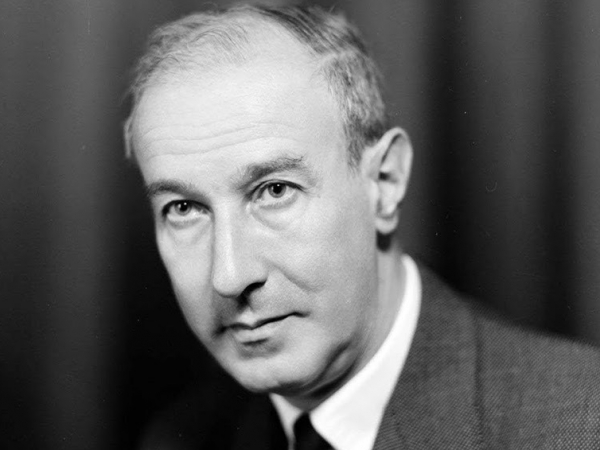He was the driving force of his generation when he published the famous anthology Spanish poetry (with two versions, that of 1932 and that of 1934), in which he managed to unite the best of Spanish lyric poetry of the first thirty years of the twentieth century, the intellectual and human prestige of Gerardo Diego has never been doubted, to the point that, with a literary work very open to the different tendencies that were produced throughout his life, he knew not only how to combine tradition and modernity but also how to maintain his own recognizable voice, which earned him, among many other awards, the prestigious Cervantes Prize in 1979 (although that year he received it ex aequo with Jorge Luis Borges). Ernestina de Champourcin said of him that he was a "catholic poet"This assertion is corroborated both by his explicitly religious works and by the transcendent air that the occasional isolated book breathes (in particular, I am thinking of the one titled Civil Cemetery(1972), although, to tell the truth, his enormous coherence, makes all his literary creation, as well as his person, give off the seal of a faith lived throughout his existence.
There are four essential titles in which the religious theme is particularly present: a play, The cherry tree and the palm tree (scenic altarpiece in the form of a triptych)and three collections of poems: Stations of the CrossAngeles de Compostela and Divine verses. It is striking that in such complex times as those in which he lived -the artistic avant-garde of the twenties-, he managed to persistently maintain that aptitude for absorbing those historical moments without ever losing the slightest hint of the Christian formation he had received as a child at home. It is explained, then, in a certain way: the poet's father, after being widowed from his first marriage, from which he had three children, remarried, increasing the progeny with seven more descendants, of whom Gerardo was the youngest. Of those ten brothers, two professed in the Society of Jesus (Sandalio and Leonardo) and one (Flora) in the Order of the Company of Mary.
It is assumed that her home environment was sufficiently lively in religious matters to understand that her parents succeeded in instilling in their children what they lived. In fact, in the prologue that Elena Diego wrote in the year 2000 for the reprinting of her father's book My Santander, my cradle, my wordThe poet's own words ratify it: "I will never thank my parents enough for being very Christian, very pious and charitable; at home there were always people, more or less of the family, eating and even sleeping, because they came and had nowhere better to go.". And it is this idiosyncrasy, inherited from his ancestors, I repeat, which will enrich and focus his vocation as a poet, which, as I said above, is manifested in several books of religious themes, among which, on this occasion, I would like to highlight his Divine verses -The book is of enormous literary quality and, perhaps, one of the deepest and most intense in Spanish religious poetry written in the twentieth century.
The edition I have chosen for our approach to his author is the 1971 edition -accessible through the Gerardo Diego Foundation-, which contains compositions of very diverse workmanship and in which, perhaps, the unifying element is marked specifically by religious matters. This collection of poems, on the other hand, can serve as an initiation to Gerard's poetic work, since he could have presented it as a compilation of his lyrical work in a purely Catholic sense. The best known poem in this collection -I learned it by heart when I was a child- is perhaps the one with a Christmas setting, entitled The palm treebelonging to Christmasone of the nine sections of the collection. The text reads: "If the palm tree could / become as childlike, childlike, / as when it was a child / with a bracelet waist. / So that the Child could see it.../ If the palm tree had / the legs of the little donkey, / the wings of Gabrielillo. / For when the Child wants, / to run, to fly at her side... / If the palm tree knew / that her palms would someday... / If the palm tree knew / why the Virgin Mary / looks at her... If she had... / If the palm tree could... /... the palm tree...". That musical game, full of tender and affective elements (the Child, the Virgin, the little donkey, Gabrielillo) with the continuous repetition of the word "palm tree" and the melodic rhythm of the verses with frequent endings in -era were perhaps the great stimulus, in my adolescence, so that the poetry of the Cantabrian began to be sympathetic and accessible to me.
Except for the initial composition, BelieveThe first part of the book, published in 1934, a key door to assimilate the rest of the poems -without the Catholic faith they would be incomprehensible to the reader, Gerardo Diego seems to be telling us with this beginning-, the different sections are divided according to the dates in which they were published. In this way, the first part of the book is the entire book Stations of the Cross1924, which was followed by the sections Christmas, Maria, Blessed Sacrament, Saints, Varia, Bible y JesusThe largest section is dedicated to the Virgin Mary.
Why start by reading or rereading the Divine verses? Simply because they constitute a sublime encounter with modern poetry of a religious nature, that which without losing its classical tone leaves the way open to the serenity and joy that comes from the encounter with God or with his mother, and more than manifests the fervor of a believing, authentic man, convinced that his poetry was a place of prayer and celebration of faith. n









